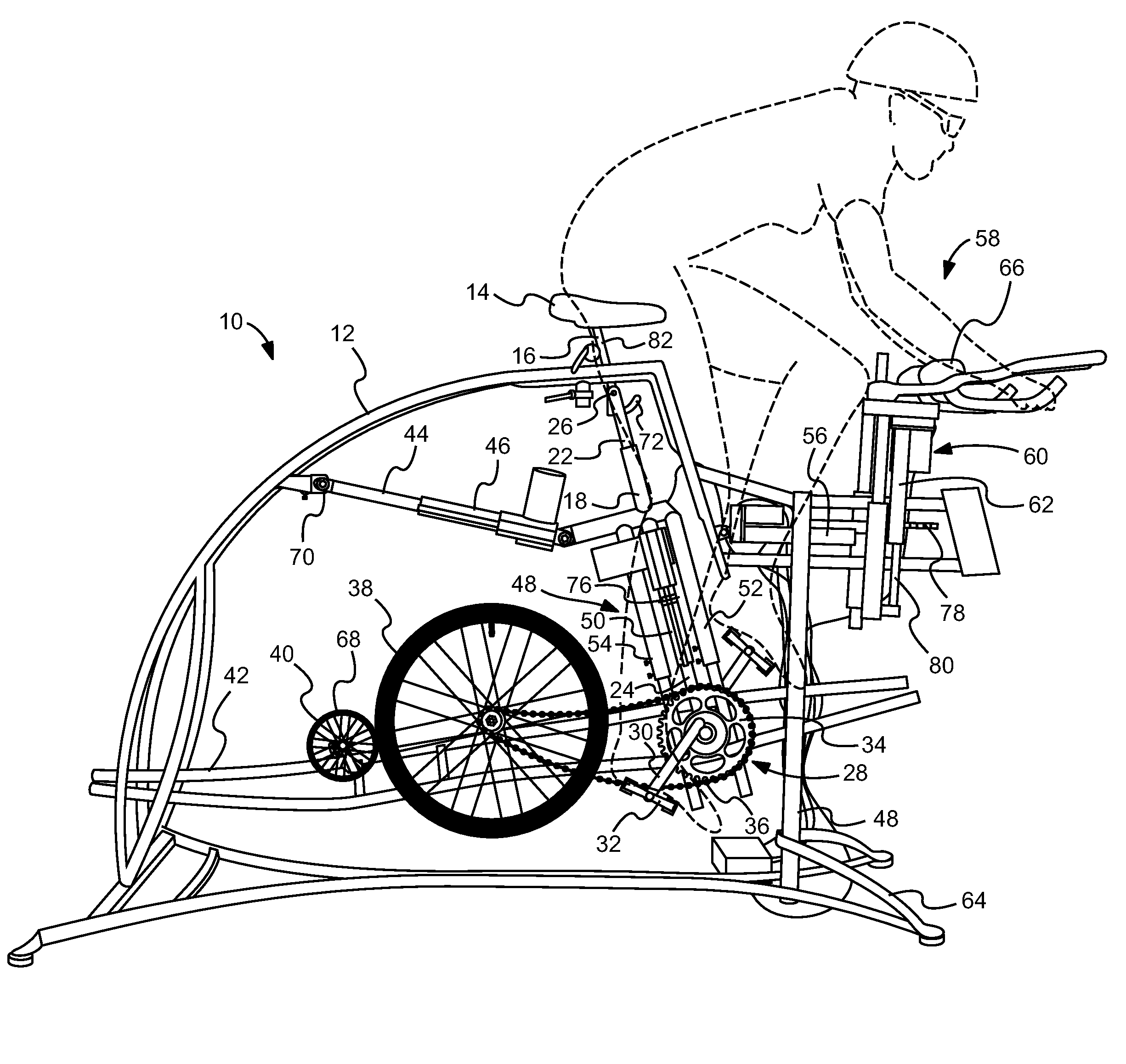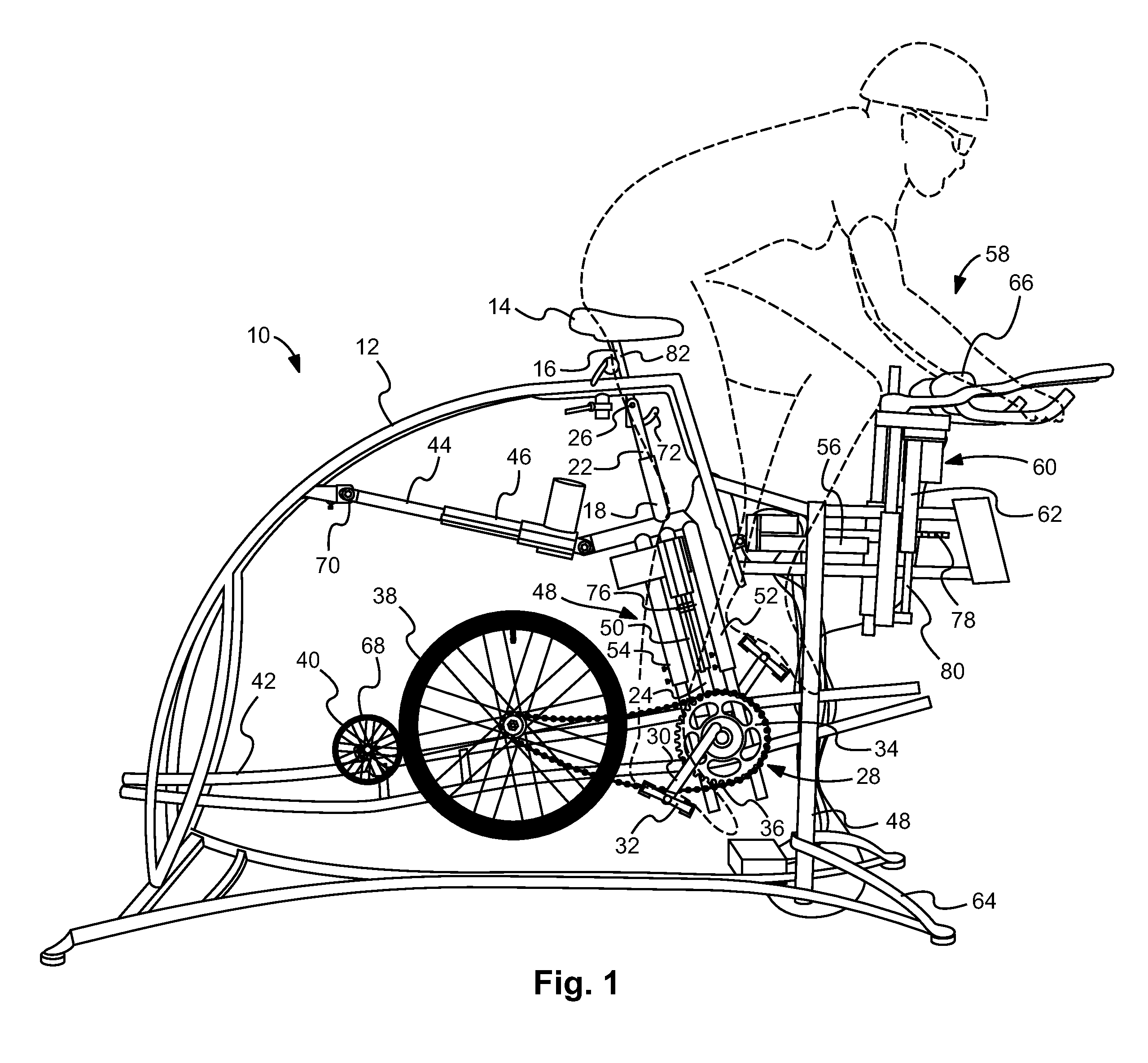Biomechanical diagnostic machine for bicycle fitting, rehabilitation and training
a biomechanical and bicycle technology, applied in the field of bicycle accessories, can solve the problems of not being able to maintain independence of key fit parameters, existing designs are not able to adjust the seat angle, and current bike fitting devices are not optimized for time-trial fitting, etc., and achieve the effect of quick feeling and seeing
- Summary
- Abstract
- Description
- Claims
- Application Information
AI Technical Summary
Benefits of technology
Problems solved by technology
Method used
Image
Examples
Embodiment Construction
[0021]While the presently disclosed inventive concept(s) is susceptible of various modifications and alternative constructions, certain illustrated embodiments thereof have been shown in the drawings and will be described below in detail. It should be understood, however, that there is no intention to limit the inventive concept(s) to the specific form disclosed, but, on the contrary, the presently disclosed and claimed inventive concept(s) is to cover all modifications, alternative constructions, and equivalents falling within the spirit and scope of the inventive concept(s) as defined in the claims.
[0022]Shown in FIG. 1 is a preferred embodiment of a diagnostic machine. The device of this embodiment is designated as 10, and includes a frame 12 on which a rider 20 sits when using the machine. The rider 20 sits as he normally would on a bicycle, utilizing the saddle 14 which is attached to the frame 12 via a saddle mount 16. Adjacent to the saddle mount 16 is a seat tube 18 which ha...
PUM
 Login to View More
Login to View More Abstract
Description
Claims
Application Information
 Login to View More
Login to View More - R&D
- Intellectual Property
- Life Sciences
- Materials
- Tech Scout
- Unparalleled Data Quality
- Higher Quality Content
- 60% Fewer Hallucinations
Browse by: Latest US Patents, China's latest patents, Technical Efficacy Thesaurus, Application Domain, Technology Topic, Popular Technical Reports.
© 2025 PatSnap. All rights reserved.Legal|Privacy policy|Modern Slavery Act Transparency Statement|Sitemap|About US| Contact US: help@patsnap.com


